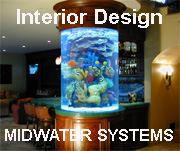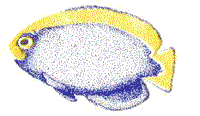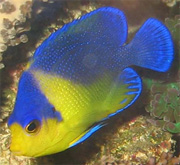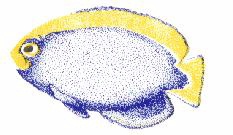|
Basic Marine Aquarium Filter Equipment
Knowing that there is the need to incorporate the three basic methods
of filtration into an aquarium, we now need to determine what those pieces
of equipment will be.
Essentially there are two approaches;
The Undergravel and Canister Filter method ( the old, yet tried and
true method ), and the Wet-Dry Trickle Filter method ( newer and much more
effective method ). Here is how they work;
The Undergravel Filter

The Undergravel Filter consists of a perforated hollow grid, that is placed
on the inside bottom of the aquarium, and an Uplift Tube that will rise
up from the perforated hollow grid. Large granule gravel is placed on top
of the hollow grid. The size of the granules should be large enough so
as not to fall through the perforated hollow grid, and the amount of gravel
should equal either one pound per gallon of water, or a one inch thickness
on top of the perforated grid. As this is a marine application the gravel
should be crushed coral gravel, or calcerous in nature.
Once the Undergravel Filters perforated hollow grid is positioned, the
Uplift Tube is secured, and the gravel is placed on top of the grid water
can be added to the tank.
The Uplift Tube serves as the passage that water will be drawn up from
the perforated hollow grid. The water that is drawn from the perforated
hollow grid will pass down through the gravel to get to the hollow area
under the grid. From this point the water continues a circular path of
moving down through the gravel, across the bottom of the hollow grid, up
the Uplift Tube and back out into the aquarium where it will start its
journey over again.
Something must be used to draw the water up the Uplift Tube and the
most common is air bubbles. As the bubble rise up the tube they change
the pressure causing the water to flow upwards. As an alternative pumps
placed at the top of the Uplift Tube, called Powerheads, draw the water
up the tubes at a much faster rate increasing effectiveness with the Undergravel
Filter
As the water passes down through the gravel to the Undergravel Filter
it is exposed to the gravel where three things occur;
* the gravel slowly dissolves and adds ( buffers ) calcium to
the water,
* debris become ( mechanically ) trapped within the granules
of gravel,
* the gravel which has been colonized by bacteria proform biological
filtration.
The biological aspects of the Undergravel Filter are the most important,
and as a result of its importance it will require attention in the form
of maintenance. The type of maintenance needed will be to rid the gravel
of the bits of debri that are pulled down into the granules. These debris
can reduce the flow of water down through the Undergravel Filter and lessen
its performance. 'Vacuuming' the gravel serves to extract those bits of
debri from the gravel.
One way to minimize the amount of debris that are drawn down into the
granules of gravel is to use another form of filtration that removes floating
particles. This type of filtration is called mechanical filtration and
it is accomplished with the use of power or canister filters.
The Canister Filter
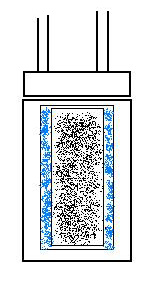
Canister filters draw water from the aquarium, pass that water through
some form of filter media, and return the water back to the aquarium. Canister
filters tend to be placed below the aquarium thus using gravity to bring
water to the filter and some form of a pumping mechanism to send the water
back up the the tank
As the water passes through the canister the type of filter media used
determines the degree of filtration. In most cases the canister filter
incorporates a media that traps out particles ( mechanical ) and another
media to help remove organic compounds ( chemical ).
The most common forms of media to trap out particles is either a floss,
a fiberous grid, or a sponge. The finer the media the smaller the particles
that are trapped out, and the more frequent the media needs cleaning.
To trap out organic compounds one typically uses a form of activated
carbon. this type of carbon is granular is shape and it very effective
at removing colors and odors from the water.
For many years these types of aquarium filtration have served hobbyists
well. Certainly they work..... its just that there is now a newer method
of filtration is more effective.
The Wet-Dry Trickle Filter
(
Click on the Image to go to the Wet-Dry Page )
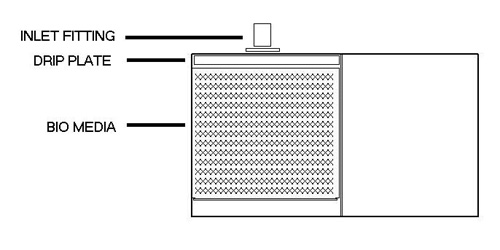
|

